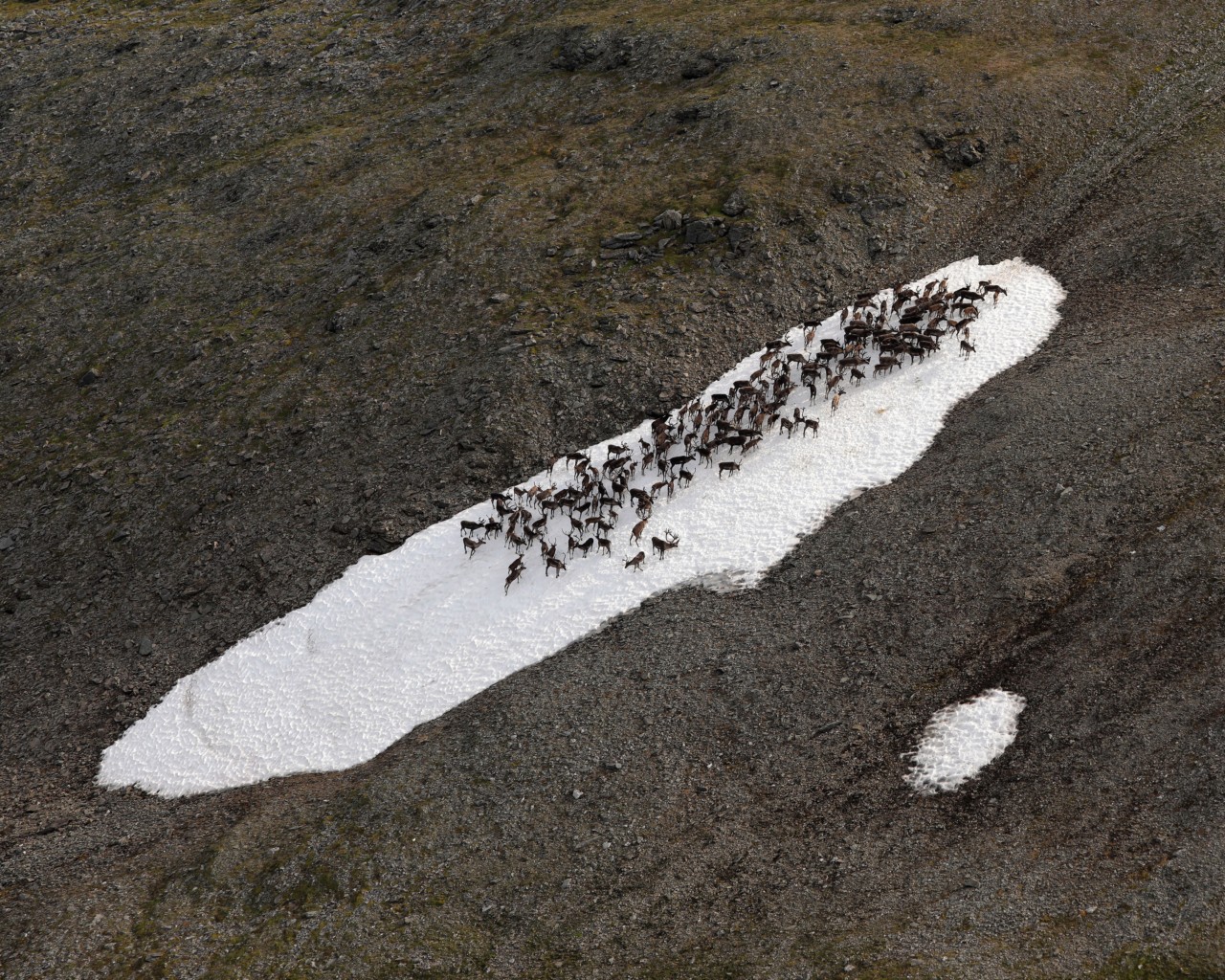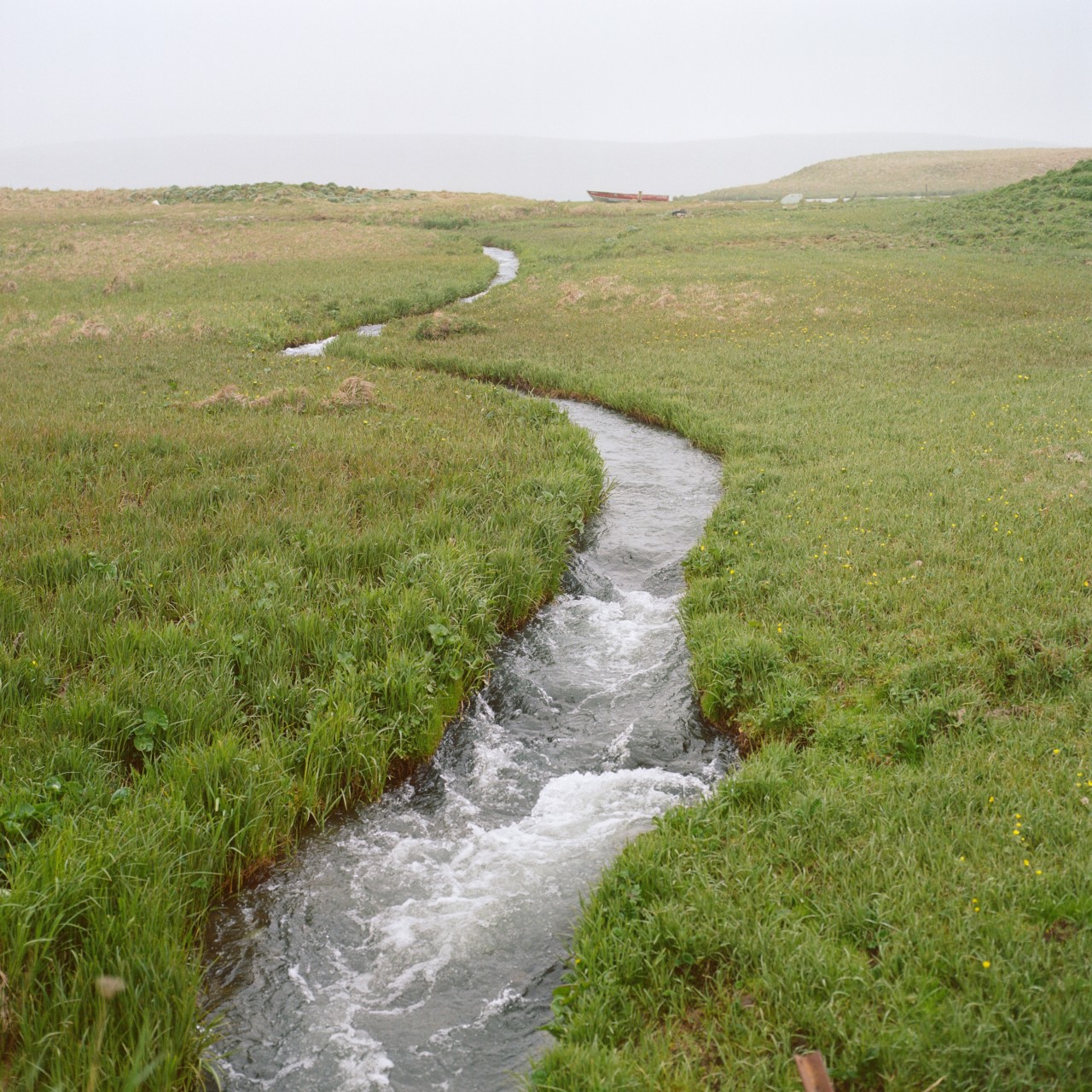

WORDS BY KATE NELSON
Photographs by Brian Adams
When Kristen Moreland contemplates the impact that oil and gas drilling in Alaska’s pristine Arctic National Wildlife Refuge would have on the Gwich’in way of life, her eyes well up with tears. Specifically, she’s thinking about the irreparable harm she and others like her believe it would cause the Porcupine caribou herd—today numbering around 200,000 animals—that for millennia have migrated to their springtime calving grounds along the refuge’s coastal plain. It’s the exact area that’s vulnerable to industrial development.
“All of our stories talk about how sacred our land is and how the Porcupine caribou herd is at the heart of our culture, our spirituality, and our survival,” said Moreland, who serves as executive director of the Gwich’in Steering Committee, an advocacy group formed in 1988 in response to calls for drilling in ANWR. Although most Gwich’in communities today are hundreds of miles from ANWR in Canada’s Northwest Territories, the wildlife refuge sits partly on Gwich’in ancestral land as well as Iñupiat homelands. Caribou calve in and around ANWR, but they traverse a vast expanse that includes the Northwest Territories throughout the year. “For thousands of years,” Moreland said, “the caribou have provided us with food, clothing, tools, everything. Protecting the caribou is a matter of basic human rights for us.”
Former President Biden’s opening up of 400,000 acres within the refuge to oil and gas leases last December is just the latest chapter in the decades-long dispute over development in ANWR, which spans nearly 20 million acres. Although the subsequent lease sale in early January yielded no bids, tensions surrounding this topic continue to run high—especially given the Trump Administration’s push for U.S. energy dominance.
To back her conviction, Moreland points to Indigenous wisdom and Western science. She recalls teachings from her elders about how any human encroachment on this ecosystem—no matter how slight, even walking in otherwise unadulterated areas—can alter animal migration patterns. She also cites recent empirical evidence on the decline of the Western Arctic caribou herd and other herds, which researchers attribute to factors including climate change and development. In addition to the culturally important Porcupine caribou, ANWR is home to an estimated 250 animal species and is considered one of the planet’s most biodiverse places.
“The majority of the state’s oil and gas development is on the North Slope, and that money is then reinvested into our communities so that people can live here safely and comfortably.”
Moreland’s outlook on drilling in ANWR represents just one perspective on the issue. Just how Alaska Native communities are not a monolith—after all, there are 229 federally recognized tribes in the state—there’s no single Indigenous viewpoint on this contentious topic. Quite the contrary; there are strong voices on both sides.
At the opposite end of the spectrum is Voice of the Arctic Iñupiat, colloquially called Voice, an organization in favor of culturally responsible development in ANWR. Formed in 2015, the nonprofit represents 21 member communities and corporations located along the state’s Arctic Slope region, which encompasses part of ANWR as well as the National Petroleum Reserve–Alaska. NPR-A is also subject to resource extraction, and President Biden took measures in mid-January just before leaving office to protect subsistence resources there.
“We want to advance self-determination for our communities, and the way that’s been done since the 1970s is through development on the North Slope,” said Voice president Nagruk Harcharek, who was born and raised in Utqiaġvik (formerly Barrow), the seat of the North Slope Borough. “The majority of the state’s oil and gas development is on the North Slope, and that money is then reinvested into our communities so that people can live here safely and comfortably. Because that’s been happening for more than 50 years, it exemplifies what we consider a positive model of cultural, ecological, and economic interdependence.”
The area being fought over was first preserved in 1960 by former President Dwight D. Eisenhower for its “unique wildlife, wilderness, and recreational values” as part of the 8.9-million-acre Arctic National Wildlife Range. That was expanded to more than 19 million acres in 1980 with former President Jimmy Carter’s Alaska National Interest Lands Conservation Act, which also called for an oil and gas assessment of the coastal plain while simultaneously mandating that any exploratory drilling or production require Congressional authorization.
Since then, there have been back-and-forth efforts at the federal level to preserve and explore the area, including the creation of the Arctic Refuge leasing program in 2017 under the first Trump Administration. The Department of the Interior in 2020 opened up 1.5 million acres within ANWR to drilling leases, prompting lawsuits from environmental and activist groups such as the Gwich’in Steering Committee, which argued that the proposed plan violated the aforementioned Alaska National Interest Lands Conservation Act, the National Environmental Policy Act, the Endangered Species Act, and the National Wildlife Refuge System Administration Act.

Even so, in January 2021, the first-ever ANWR lease sale went on—but drew little interest. It generated just $14.4 million from three bidders, far below the $1.8 billion initially estimated by the Trump Administration. On his first day in office that same month, President Biden placed a moratorium on ANWR oil and gas drilling, citing an inadequate environmental review. The Congress-led reintroduction of the Arctic Refuge Protection Act followed, along with the Biden Administration’s 2023 cancellation of the remaining leases held over from the first Trump Administration. This ongoing battle over ANWR reflects a broader conflict about extracting natural resources from federally held land, which many argue stands in direct opposition to the Indigenous-led Land Back Movement aimed at returning culturally significant sites to Native oversight or co-management.
Indigenous self-determination is at the heart of the Gwich’in Steering Committee’s work, explained Moreland. “Our connection to the Arctic National Wildlife Refuge runs deeper than politics or economics,” she said. “We call the coastal plain ‘Iizhik Gwats’an Gwandaii Goodlit,’ meaning ‘the Sacred Place Where Life Begins.’ This land is not just a place; it’s the foundation of our culture, our spirituality, and our survival.”
Moreland believes that the federal drive for resource extraction in ANWR reflects a major misunderstanding about Alaska Native lifeways, especially those in the Far North, which to this day heavily depend upon subsistence hunting and fishing practices. “People don’t understand the way we live up here because they’re so used to their own environments [in the lower 48],” she said. “In order to get to the little village where we’re from, you have to fly two hours on a little plane from the nearest city. So all of our freight is very expensive, and our ‘fresh food’ is not actually fresh by the time it gets to us. It has usually wilted on the plane, especially because our weather can be very harsh—sometimes down to 70 degrees below. This is why we still depend on our caribou, as we have for thousands of years.”
But not all calls for industrial development in ANWR come from outsiders. A move toward greater sovereignty is also behind Voice’s efforts.
“We deserve a seat at the table on all the issues affecting our communities and our homelands,” said Harcharek. “The people most affected by these policies have often been drowned out by large outside organizations with little to no connection to the lands that we as people are actively living on and living off of. With our work, we’re trying to show how our communities, our culture, and our economy are all intertwined.”
“Our connection to the Arctic National Wildlife Refuge runs deeper than politics or economics. We call the coastal plain ‘Iizhik Gwats’an Gwandaii Goodlit,’ meaning ‘the Sacred Place Where Life Begins.’”
To illustrate this, Harcharek outlines that the North Slope Borough, which encompasses eight Alaska Native communities, derives approximately 95% of its tax base from the oil industry and related infrastructure. He says that revenue is crucial in providing essential services—including education, health care, housing, police and fire, wildlife management, and more—to the nearly 10,000 permanent residents within that constituency. That influx of capital is critical for a community that is still reckoning with a long history of dispossession, racism, and marginalization by settler colonizers.
“These services allow our communities and our culture to continue to flourish in this modern world,” Harcharek said. “Without that economy, you threaten our communities and you threaten our culture. Having that economic base keeps everything moving in the right direction. For example, in 1969, before that development, our region’s average life expectancy was 34 years and today it’s 77 years—one of the most dramatic shifts in the United States.”
Harcharek is quick to clarify that Voice’s stance doesn’t value economy over culture; rather, the organization’s members believe in the power of collaborative, culturally responsible industrial development. “Our top priority is that policies reflect our communities’ values,” said Harcharek. “We take our reliance on our environment for our culture and our subsistence resources very, very seriously, so we’re always evaluating [development] projects to ensure they don’t pose a threat to our subsistence way of life.”
For Indigenous advocates on both sides of this issue, the approach doesn’t change depending on who is in office—even with the looming uncertainty about what the next four years could bring. “Executive orders are a stroke of a pen and can be undone with another stroke of the pen,” Harcharek said. “We’re hoping to create more durability with these policies so that hopefully in the future, our kids aren’t having to fight this same fight.”
Moreland, too, has her eye on the past and future in hopes of protecting sacred places like ANWR for the next generation. “This place is God’s country,” she said. “If you saw it, you’d understand why we’re fighting so hard for it. This land is our heart.”
Inside the Debate to Drill at the Nation’s Largest Wildlife Refuge
